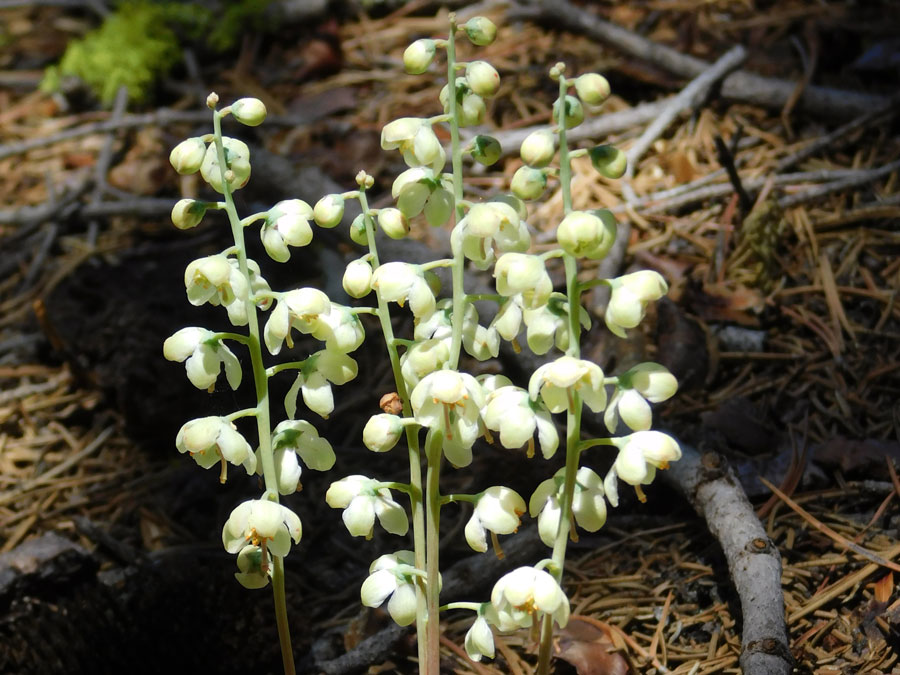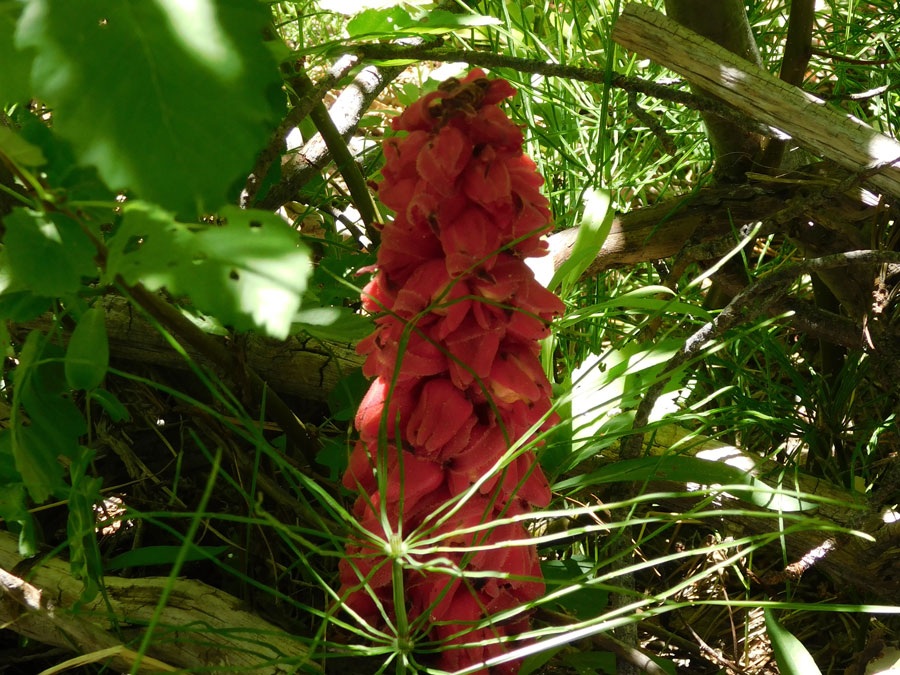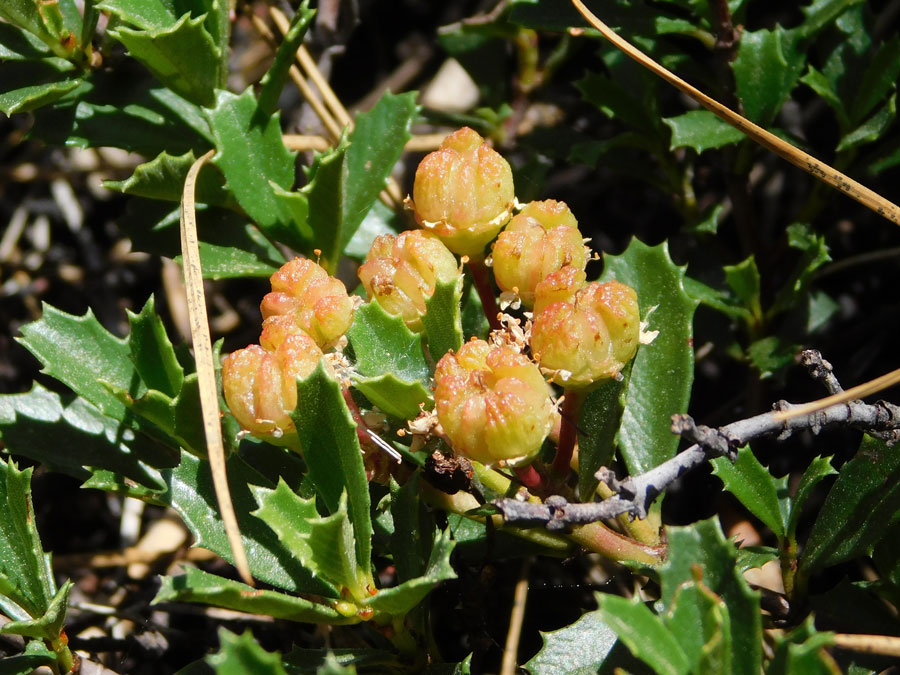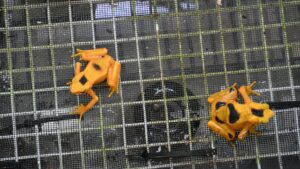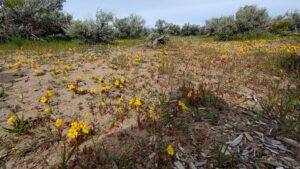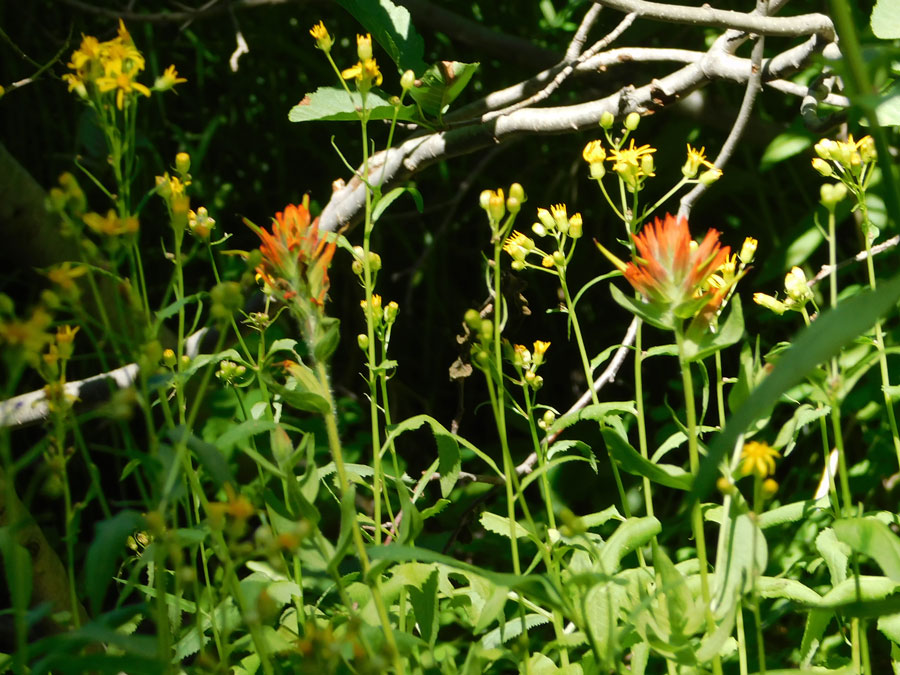
ENGLISH MEADOW, Calif. — Come spring, when the snow melts, this high mountain meadow near Truckee, Calif., will be covered in wildflowers. Bright orange-red flowers with clover-like heads will bob on the summer breeze amid green grasses. As the season unfurls, buttercups, purple larkspur, blue camas, white bistort will also spring up.
Meadow wildflowers play an important role in the larger ecosystems of the Sierra Nevada.
“The flowers are a primary food source for insects, and insects are an important food source for bats and birds,”said Terri Rust with the Plumas Corp., an environmental restoration and education nonprofit based in Quincy, Calif.

Larkspur (genus Delphinium), shown here in English Meadow, is a special favorite of hummingbirds and bumblebees. Photo by Neysa King, NID.
Yet roughly half of the Sierra Nevada’s nearly 280,000 acres of meadow have been degraded or are at risk of becoming degraded, according to the Sierra Meadows Partnership, a nonprofit dedicated to preserving and restoring mountain meadows.
Yet some 30,000 acres of mountain meadows in the Sierra Nevada have been degraded, limiting their ability to store snowmelt that supports the wildflowers and other ecosystems. Degradation limits meadows’ ability to store snowmelt that supports the wildflowers and other ecosystems.
“Eventually, it impacts humans, because we don’t have enough pollinators to pollinate our food sources” due to pesticide use, habitat loss and other factors, Rust said. “Things in nature are so integrated.”
Because people have altered so many landscapes, mountain meadows offer an important refuge for many species.
“During summer months, montane meadows are considered the single most important habitat in the Sierra Nevada for birds,” according to Sierra Meadows Strategy, written by the Sierra Meadows Partnership.
The coalition of government, educational, private and nonprofit organizations has sketched out a framework for preserving 30,000 acres of meadows.
During spring and summer, the multicolored Sierra Nevada wildflowers rely on spongy meadow soils that hold the melted remains of mountain snowpack. Mountain meadows store that water, then during summer, slowly release it into nearby waterways, supplying drinking water for people and other creatures.
In a healthy meadow, the water table often stays near the surface, where roots delve. But some Sierra Nevada meadows have dried out, in part because of human activity that has changed the shapes and functioning of riverbeds and floodplains, limiting the amount of water that seeps into meadows.
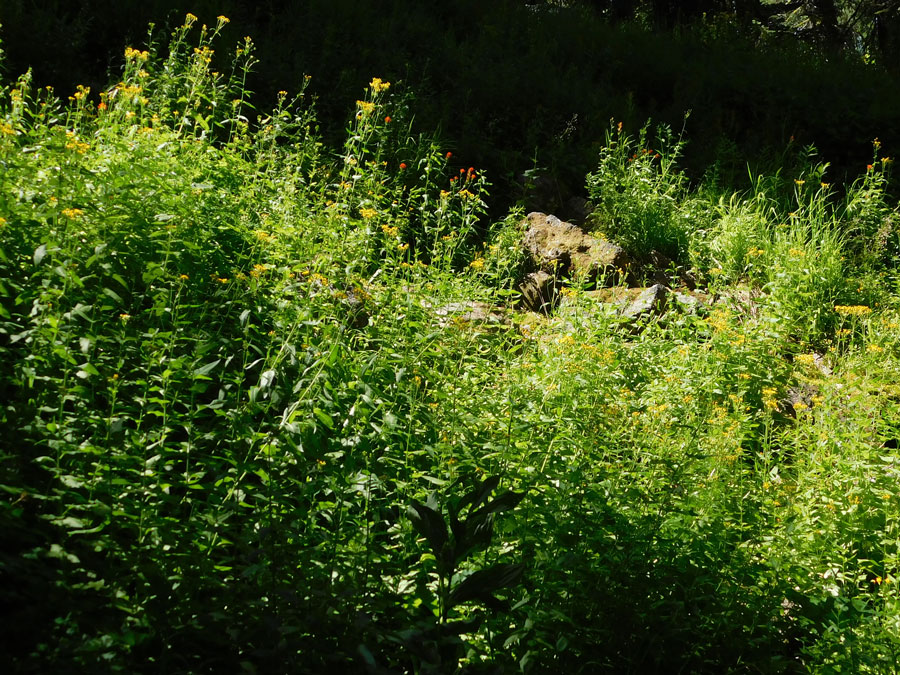
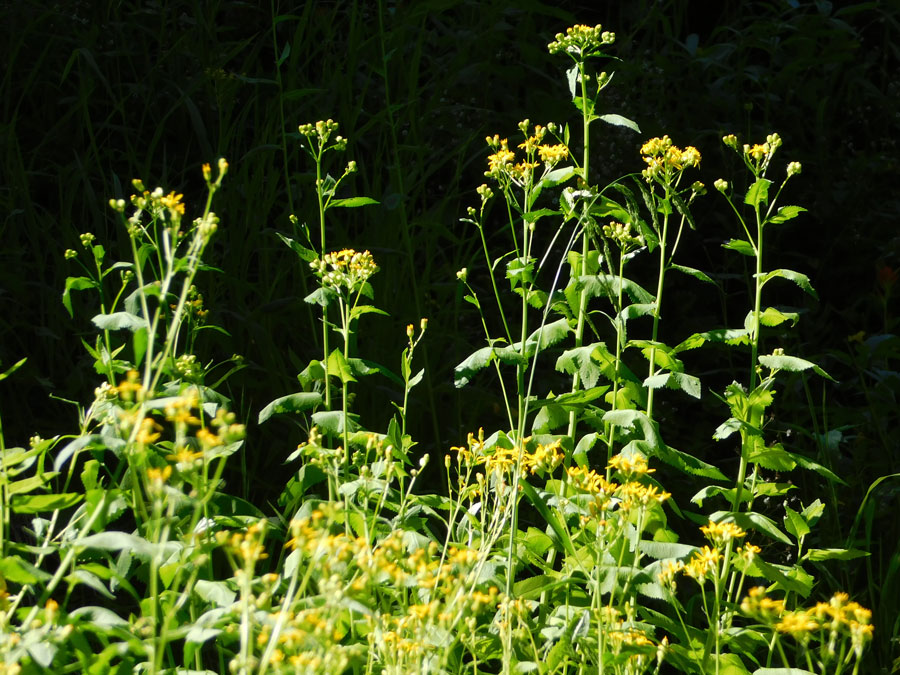
Meadow wildflowers as indicators
Meadow restoration projects include considerations of the meadows’ floral diversity, Rust said. When a meadow can support many types of flowers, that’s one sign of its ability to withstand environmental pressures.
Much of English Meadow has been degraded; some areas are rather dry, and forest plants have invaded the meadow area. Yet other areas remain quite wet. The Nevada Irrigation District, based in Grass Valley, has been studying English Meadow for three years in preparation for restoring it. Neysa King, NID’s environmental resources administrator, has found several species of wildflowers in brilliant shades of red, yellow and blue in the meadow and nearby woods.
The meadow is also home to a rare ecosystem.
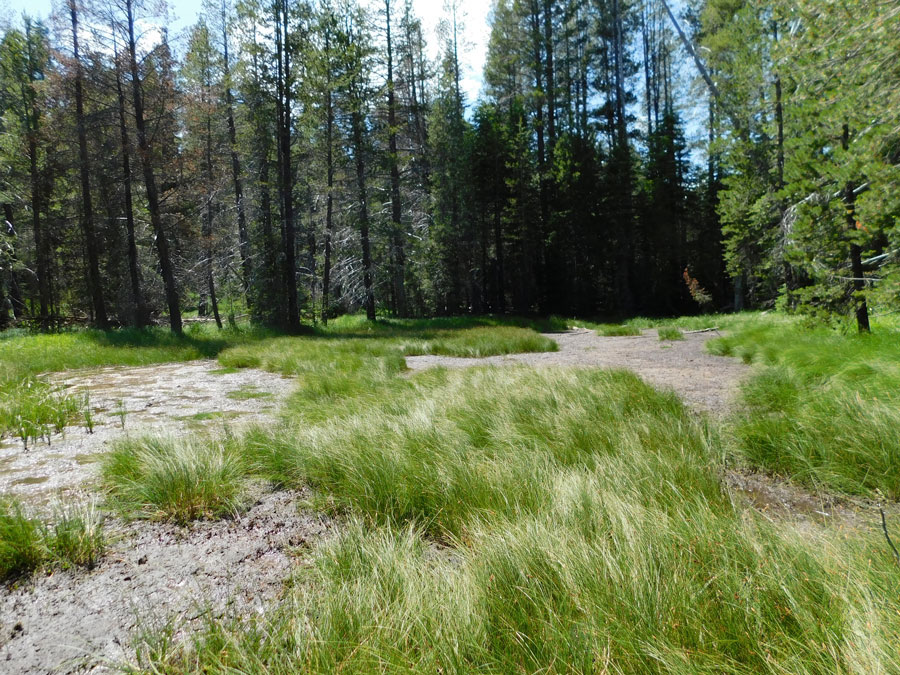
English Meadow is home to a rare ecosystems called fens, a type of peat bog, which hosts unique plants. Photo by Neysa King, NID.
“Sometimes, as with English Meadow, you find these really rich, special pockets that are called fens, or peat bog communities, where you have really unique species… and some very, very old plants,” King said. “English Meadow has a number of these pocket fen communities.”
Fens also are home to lichens, mosses and tiny, orchid-like flowers commonly called wintergreen.
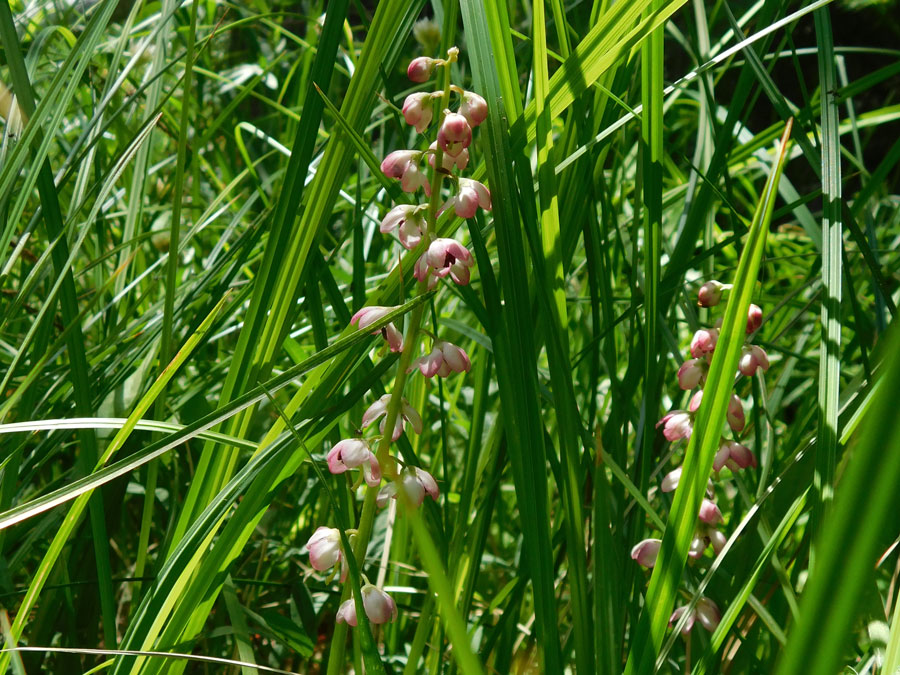
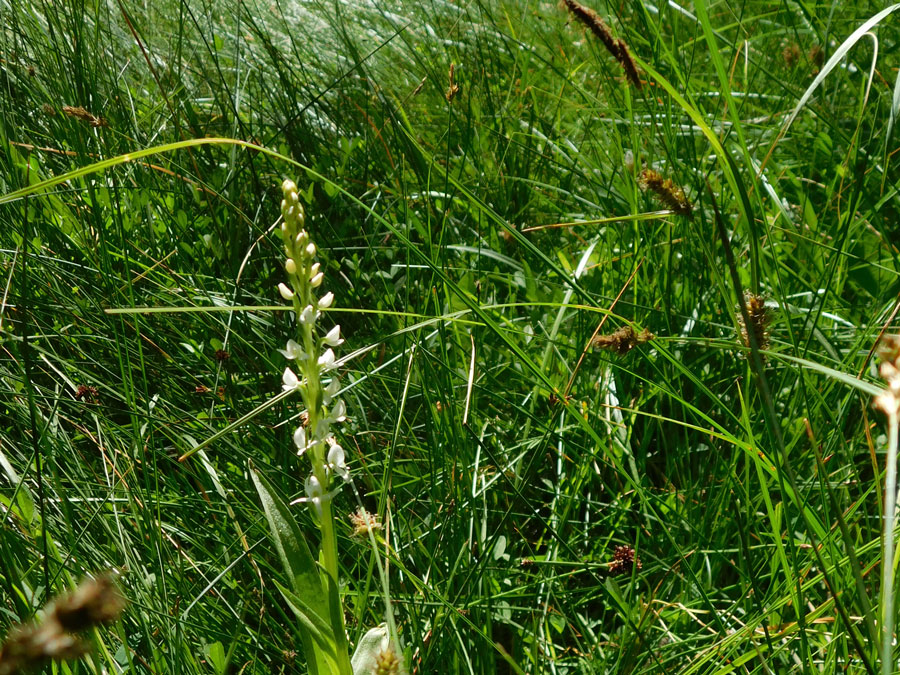
Carpet of flowers are signs of success
Rust’s work takes her to meadows all along the northern Sierra Nevada, including long-time restoration work in Red Clover Valley, near Beckworth, Calif. Her excitement upon seeing summer’s floral bounty never flags.
“(The meadow) is a great example of how restoration can work,” Rust said. “These are niches in our mountains that are preserving things that we’ve lost elsewhere.”
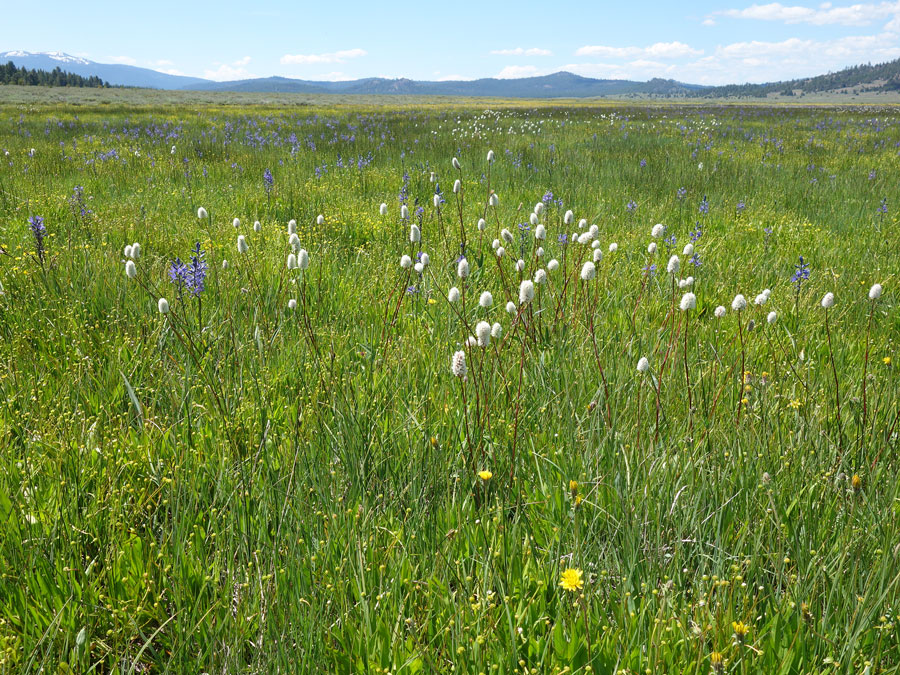
Forest flowers offer surprising shapes, colors and textures. Of the snowplant and woodland pinedrop, King said, “I found these in the forested edges around the meadow, whee the valley rises into the slopes of the watershed.”
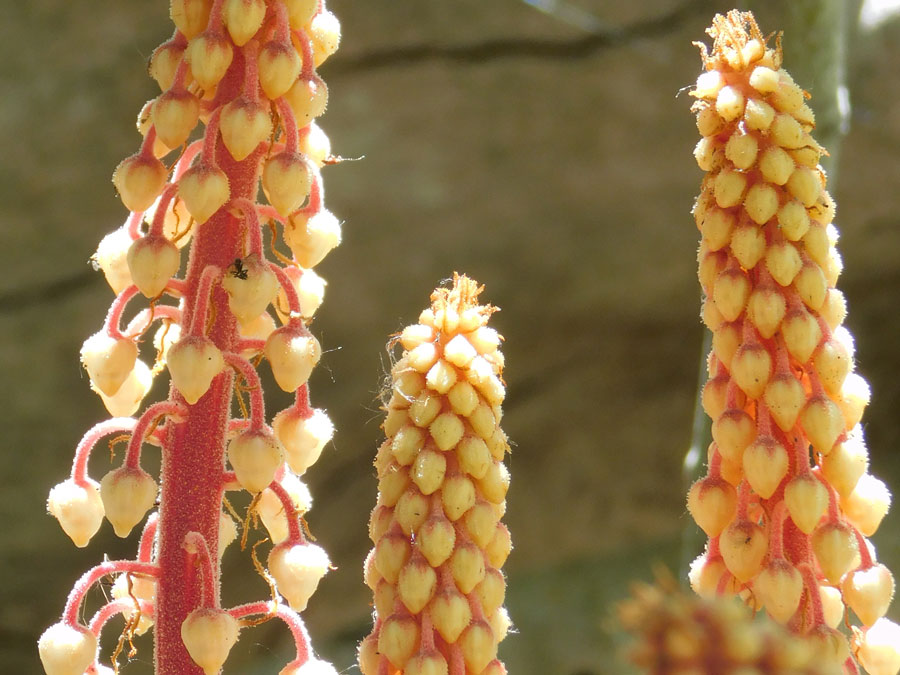
Woodland pinedrops (Pterospora andromedea), in English Meadow. Photo by Neysa King, NID.
